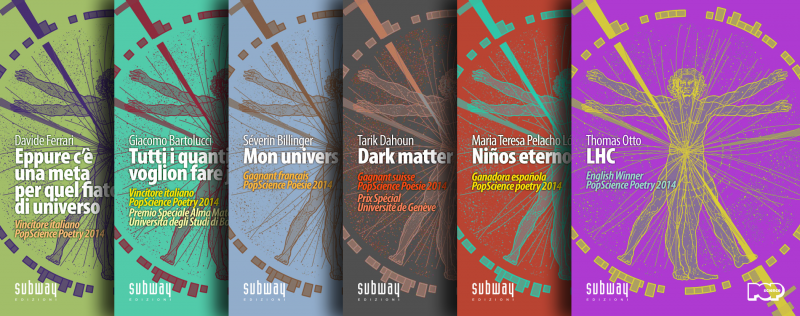Every year on the last Friday of September, hundreds of cities around Europe celebrate the beauty and wonder of science as part of the European Researchers’ Night. CERN has participated in the festivities for a few years, and the 2014 edition had a unique spin: the theme “Pop science is for everyone” was inspired by Andy Warhol and one of the events was a science-inspired poetry competition.
POPSciencePoetry invited participants to submit a mini-collection of three unpublished poems inspired by the science and life at CERN, in Italian, English, French, Danish or Spanish. More than two hundred poets participated in the contest. The winners, selected by an international jury, were announced earlier this month at CERN.
One of the poems by Thomas Otto, winner of the English competition, was about the CMS detector. Thomas, who is an applied physicist working at CERN as a Department Safety Officer, had this to say when asked about his choice of subject: “I think that the CMS detector, so complex, yet so elegant and compact, inspired me to express complex concepts in a simple, straightforward manner, through evocative and direct images that captivate the reader’s imagination. That is what I tried to do with this poem.”
The winners’ works were translated into the languages accepted for the competition, published and distributed in the freely available POP SCIENCE / Poetry 2014 e-book collection (links below). Thomas’s original poem is reproduced here:
II – CMS
A cylinder from glass and steel,
A mythical animal hunched deep in its cave,
Swallowing bunches of protons,
Like a frog catching flies.Protons colliding, the debris on paths bent by magnetic forces
Electrical signals through a network of cables
The animal’s thoughts light up,
A memory of the origins.
The POP SCIENCE / Poetry 2014 e-book collection can be viewed on an e-book or using appropriate software on your computers or phones:
- Eppure c'è una meta per quel fiato di universo, by Davide Ferrari
- Tutti i quanti voglion fare jazz, by Giacomo Bartolucci
- Mon univers, by Séverin Billinger
- Dark matter, by Tarik Dahoun
- Niños eternos, by Maria Teresa Pelacho López
- LHC, by Thomas Otto
The views expressed in CMS blogs are personal views of the author and do not necessarily represent official views of the CMS collaboration.

